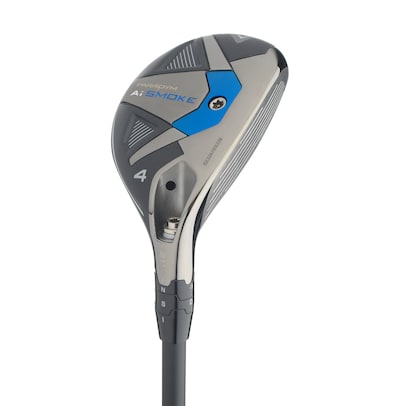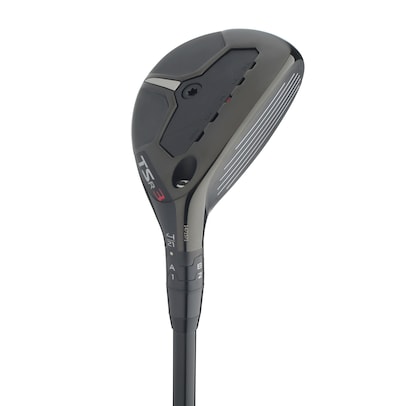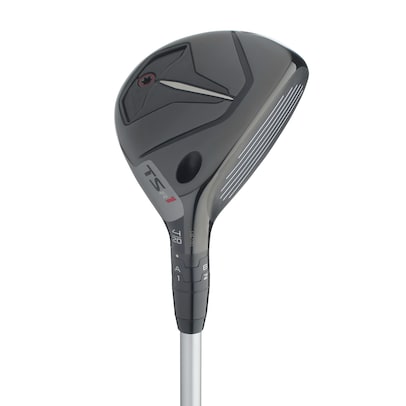Hot List
The best-looking hybrids, according to players of all skill levels

When you’re talking about the best-looking hybrids—a club that is itself a kind of a cross between a fairway wood and a super game-improvement iron—it might seem like we’re trying to pinpoint something that could be a lot of different things. But when we talked to our 32 players at the Golf Digest Hot List Summit about the hybrids that catch their eyes, the most common word we heard was “confidence.” Makes sense. As the club that replaces those hard-to-hit long irons, something that imbues its user with positive feelings even before the first swing can go a long way to producing positive results.
That’s an important element of how we ask our players to rate clubs. When it comes to the Hot List criterion of Look/Sound/Feel, while all of those characteristics are combined to determine a single overall rating, our players are asked to assess a separate score for Look before they hit a club. That way the club’s performance doesn’t sway that somewhat intangible but powerful emotion that makes a golfer almost universally gravitate toward a certain shape. As we tell our players, a great score for Look reflects your excitement to hit a particular club, and the best clubs should reflect a certain kind of perfection: “Like Jerry West in the NBA, this should be the next logo for the Hot List. … Exceptionally flawless and intricately riveting, like Picasso’s Guernica or Ansel Adams’ Half-Dome.”
As it turns out, what that exactly means in terms of a hybrid is slightly different for our three handicap groups. In a sense, better players, who have tended to move away from hybrids in recent years, generally prefer more compact shapes and address positions that line up with the kinds of irons they typically hit (minimal offset, for example). Higher handicaps want a club shape that makes higher-launch and off-center hit forgiveness seem readily apparent so they can endorse shapes that move more in the direction of smaller fairway woods.
The hybrids on this list of best-looking models resonated with players in each handicap category because they all appeared to offer the varying amount of help each group was seeking. Our list of best-looking hybrids ranges from those that present the appearance of game-enhancement for low handicappers to game-improvement for the mid and high handicappers. So here are the hybrids our players fell in love with at first sight. Each list is based on the choices of our three handicap groups: Low, Mid and High.
Low Handicaps

Targeting players with average to high swing speeds, this full-service hybrid aims to find a little more distance and tighter dispersion with its AI-generated face design. The weighting and shaping accentuate this player’s needs, including a tungsten weight that pushes the balance of the head forward and deep to calm distance-robbing spin and to promote an efficient energy transfer at impact. The larger shape provides extra forgiveness on mis-hits, and the sole camber extends that forgiveness to turf interaction.

When you hire a handyman, you expect him to be able to carry an armload of two-by-fours, bring his own tools and dang sure drive a tricked-out F-150. The busting-out-of-its-flannel-shirt King Tec is that sort of hybrid handyman. With three adjustable weights, a light carbon-composite crown and a high-strength steel face insert, this brute is ready to go to work regardless of the assignment. The weights, including an adjustable hosel, let you tweak launch, dial in spin and wrench away that slice or hook.

Designed with the tour player in mind but offering enough optional settings to make the blue-collar golfer comfortable, this mid-size model offers a neutral flight but with launch-increasing and spin-reducing low center of gravity. The adjustable hosel pushes the loft range to as low as 14 (for tour players) and as high as 27 (for tour fans). It gives the player who wants to work shots a shape he or she feels comfortable with while providing forgiveness, launch and distance for those just trying to advance the ball.

Like business ethics and jumbo shrimp, “players hybrid” seems like a contradiction. Too often for better players, the help from hybrids is excessive and the draw-bias weighting is a turn-off. But even the best players need help as clubs get longer, and this model portions its aid in the right measure. This includes heel-and-toe internal weighting for consistent distance control and a more squared-off look at address. The compact head fosters workability and an iron-like-hybrid drive through the turf—as contradictory as this sounds.

If you want to design a better hybrid for good players, you could deploy a team of engineers to dissect the needs of low spin, controlled launch and power. Or maybe you just could ask Steve Stricker, who has been rocking an old-school Titleist 816 H1 hybrid since the Obama administration. When the Titleist team looked at upgrading this better-players model, they focused on the Stricker-played shape. Its lower and forward center of gravity works well with more of a steep, iron-like swing and provides more workability.
Mid Handicaps

Don’t focus so much on the lofts on this hybrid, which are the same as those on the standard Ai Smoke. Because the shafts here are progressively longer with more tip flexibility and because these heads are designed with a lower center of gravity through a wider sole and a shallower face height, the HL model, as its name implies, should provide a higher launch angle. The tungsten in the front part of the sole assists in giving these players even more height.

We get that making a hybrid with a trampoline face is desirable, but all that ball speed without the ability to launch the ball isn’t much use. The ideal hybrid needs its internal weight to be low to boost that launch angle. Darkspeed uses an ingenious internal bridge-like weight bar low and close to the face to make it easier to launch shots high. At the same time, this structure allows the thin face to wrap around the leading edge for maximum ball speed.

When you hire a handyman, you expect him to be able to carry an armload of two-by-fours, bring his own tools and dang sure drive a tricked-out F-150. The busting-out-of-its-flannel-shirt King Tec is that sort of hybrid handyman. With three adjustable weights, a light carbon-composite crown and a high-strength steel face insert, this brute is ready to go to work regardless of the assignment. The weights, including an adjustable hosel, let you tweak launch, dial in spin and wrench away that slice or hook.

This hybrid may look more like a fairway wood, but after Titleist engineers studied the potential market for a lightweight hybrid, they found that bigger is better. The wide sole is easier on the typical sweeping strokes made by players at this level, but more importantly this big-body hybrid provides stability on those all-too-common off-center strikes. The screw weight in back builds in dynamic loft to help shots start on a high-flying trajectory. A tip-flexible, shorter fairway-wood shaft provides high launch, and the overall lighter club weight instills control.

Making a hybrid forgiving, which usually requires a deeper center of gravity, can be a problem if it leads to shots drawing too much, especially for faster swings, but TSR2 emphasizes accuracy with its push for distance. A hybrid should be targeting a green just like the iron it replaces. Hence, the wider blade length on the TSR2 offers power and forgiveness and slightly shifts the center of gravity away from the shaft for a more neutral, on-target flight.
High Handicaps

Don’t focus so much on the lofts on this hybrid, which are the same as those on the standard Ai Smoke. Because the shafts here are progressively longer with more tip flexibility and because these heads are designed with a lower center of gravity through a wider sole and a shallower face height, the HL model, as its name implies, should provide a higher launch angle. The tungsten in the front part of the sole assists in giving these players even more height.

When you hire a handyman, you expect him to be able to carry an armload of two-by-fours, bring his own tools and dang sure drive a tricked-out F-150. The busting-out-of-its-flannel-shirt King Tec is that sort of hybrid handyman. With three adjustable weights, a light carbon-composite crown and a high-strength steel face insert, this brute is ready to go to work regardless of the assignment. The weights, including an adjustable hosel, let you tweak launch, dial in spin and wrench away that slice or hook.

These hybrids solve your problems so discreetly you might start to believe they are strengths. Suddenly, 4- and 5-iron shots have height and distance because of a wraparound face that increases the flexing area. Carbon composite at the back of the crown drips over the edges of the perimeter to lower the center of gravity so that shots launch easier. With an adjustable loft range of up to 35 degrees, you may never need to hit a middle iron again, much less a long iron.

With a hybrid’s relatively compact size, finding ways to save weight requires imagination. Using carbon composite to stretch the size of the crown, for example, probably matters more in a hybrid than it does on a driver. (The lightweight material replaces steel, which is heavier than the titanium on a driver.) For the Qi10, this means shifting weight to the perimeter to lower the center of gravity for more distance.

Be honest: You need a hybrid because the last time you hit a 4-iron higher than the roof of your golf cart, you were still carrying a 3-iron. This oversize hybrid addresses your needs with the highest flight in the TaylorMade stable because of a carbon-composite crown that produces a lower center of gravity. The shallow-face height makes this big body more effective, and its size provides more forgiveness across the face.





